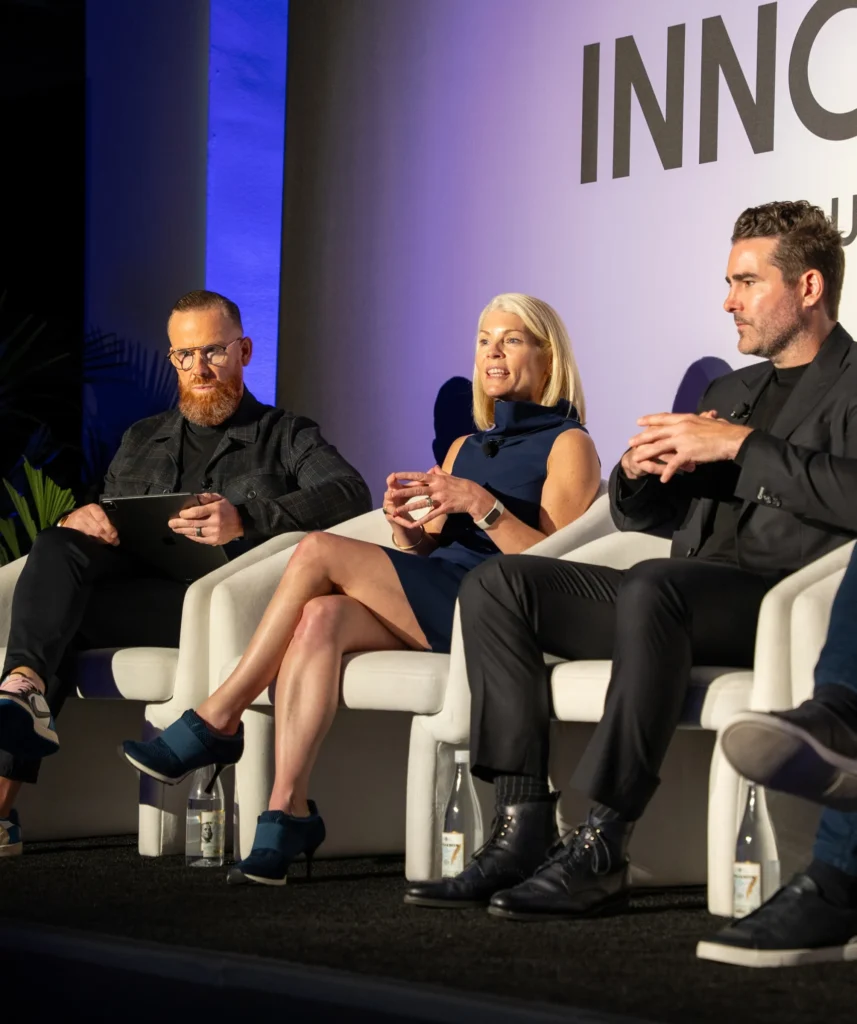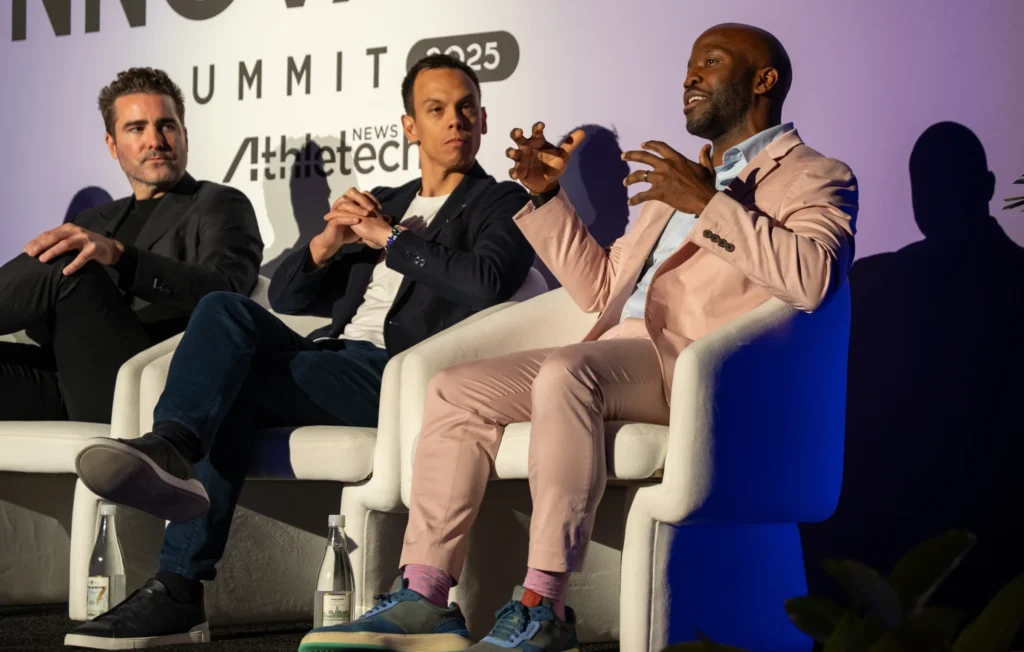C-suite execs break down the pros, cons and key considerations of franchising versus staying corporate-owned, including how each model impacts scaling, culture and control
There’s no shortage of fitness brands looking to expand their empires — and while some are more bullish than others, it’s hard to find an operator out there that doesn’t intend to grow in some way.
That said, shared goals don’t always put you on the same pathway. In the fitness industry, right now, expanding through the franchise model is gaining significant traction. However, the corporate-owned avenue exists as well. For brands in their early stages, choosing the right method is crucial
At the ATN Innovation Summit 2025, industry leaders including Lauren Cody, brand president at Orangetheory Fitness, Brandon Cullen, co-founder and chief concept officer at MADabolic, Bryan Myers, president and CEO of Solidcore, and Mike Tan, a consultant for SWTHZ, shared a variety of insights stemming from their own growth experiences.
The discussion, “The Great Growth Debate: Franchising vs Corporate-Owned,” was moderated by Jay Siano, co-founder and CEO of real estate advisory firm Sabre.
Each Method Has Its Pros & Cons
Cody wasted no time getting into the core advantages of the franchise and corporate-owned growth models: the former permits faster expansion and establishes a larger breeding ground for innovation with all the franchisors involved, while the latter allows more control over the product.
“That’s really important when you’re trying to define who you are in the marketplace,” Cody said of the control afforded to corporate-owned concepts. “There’s a singularity of purpose. You can be much more agile with decision-making.”
“What a lot of people don’t understand is a franchise is a business within a business,” MADabolic’s Cullen added. “Those owners still have a lot of say within their business, and you have to support a lot of those decisions. Sure, there are some cultural elements and non-negotiables, but these people have invested a lot of money. You have to work within the constraints of a franchise system.”
In support of the franchising model, Cody noted the power local relevance brings, especially for national and international brands.
“If we go back to what our consumers are looking for, yes, they’re looking for results – for fitness product,” Cody said. “But they’re also looking for community, and it’s hard to deliver community authentically unless you’re part of that local community as a local business person. That’s one of the biggest benefits of franchising.”

Myers, whose entire network of Solidcore locations is corporate-owned, argued his model permits quick growth as well. Having all the money coming from one source goes a long way and is advantageous, especially for brands like Solidcore that deliver a distinct product.
“In a company-owned model, your speed to innovation can actually be faster, particularly to the extent that there are investments that need to be made at the local level to make that innovation happen,” he said. “That becomes more challenging as you’re trying to wrangle franchisees to make that happen and get them to commit their capital to an idea that may or may not work.”
Is a Hybrid Model the Best of Both Worlds?
Myers did add that while the corporate-owned model worked for his brand, he can’t promise it’ll do the same for others. Tan, who works within a true hybrid model that keeps a quarter of SWTHZ locations corporate-owned while the rest are franchised, expressed a similar opinion.
“I’m not saying this is the answer,” he said of the SWTHZ hybrid model. “But it’s worked for us, given our DNA and who we are.”
Tan specifically noted that instances where a specific fitness or wellness brand might have trouble scaling through franchising alone.
“Imagine a concept that has very high variability, and in addition to that, has a founding team that’s all about control, that might be a recipe for challenge,” Tan said. “There’s a lot to the DNA of who the founders are and who the founding teams are to really guide them down the right path.”
Must-Haves for Corporate-Owned Concepts
For corporate-owned brands chasing growth, Myers stressed the need to find reliable partners.
“To build a corporately owned model, it takes a fair amount of capital, so picking the right partners is really, really, really important to the journey,” he said. “Finance bros do a lot of diligence on us as operators, and I’m shocked at the number of operators who don’t do an equal amount of diligence on the partner. So make sure you do that.”

Myers also preached the importance of teamwork and talent, emphasizing the need for other voices to push people outside their comfort zones. Solidcore does so by intentionally hiring from outside the fitness industry.
“We have hired people from restaurants, traditional retail, strategy consulting, banking and SaaS businesses because there are elements of all of those businesses we feel are going to be transformational for our operators,” Myers said. “We wanted to learn from people who had been on the front lines of those businesses.”
Speed Isn’t Everything
With all the talk of efficient expansion, speakers still argued brands need to make sure they’re not rushing into anything. Delivering a uniform product is paramount, according to Cody.
“I spend a lot of time working with our franchisees on consistently delivering the member promise in every class, every studio, every time,” she said. “That consistency is what makes great brands. If you don’t have consistency, you don’t have a brand. To me, at this moment in time, what is far more important than scale is making sure that we get back to a category of one.”
Tan agreed that process should never be overlooked in pursuit of the end result, especially on the franchising side of SWTHZ’s operation.
“You don’t just do franchising,” said Tan. “You have to invest. You have to have that B2B mindset. We’re going through it now…you’re constantly retraining the team and rethinking what’s best for our franchisees so they can then do what’s best for the consumer. There’s this multi-approach you always have to consider.”
This article is based on a live discussion held during the ATN Innovation Summit 2025, a two-day event dedicated to the future of fitness and wellness. See here for more Innovation Summit coverage.



